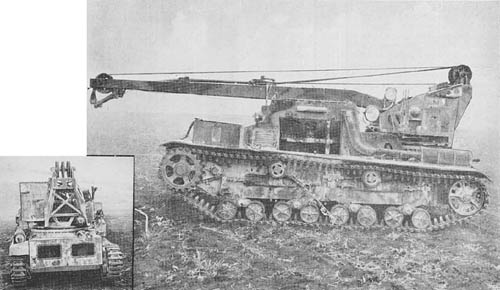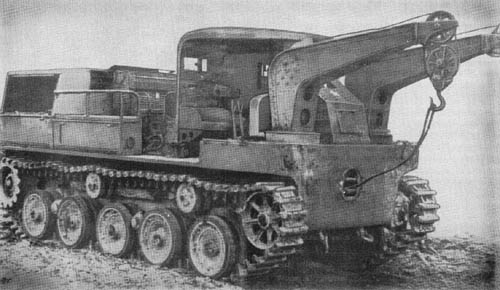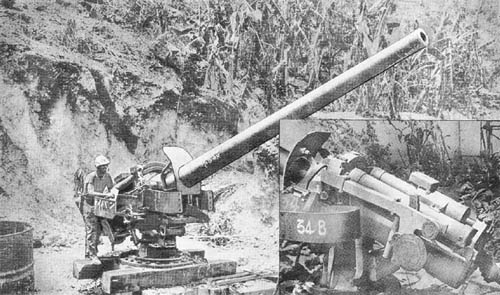
It is believed that this naval coast defense weapon was designed primarily for use against ships, as the fuzes used with the gun’s ammunition are not sensitive enough to function satisfactorily upon impact with soft ground. This gun uses separate loading ammunition, and has a standard type mushroom head obturator. The breechblock is the horizontal swinging, interrupted screw type, having three threaded segments with two step threads. A hydropneumatic recoil mechanism is located above the barrel.
A naval pedestal type mount is used. Strips of iron fastened to and radiating from the pedestal are buried in the ground to insure stability. The piece is sometimes fitted in a casemate, the front and sides of which are cast in one piece. The top is rolled plate. A mantlet is fitted to the gun on the inside of the casemate. Gun and casemate are rotated manually, as no power system is provided.
No fire control equipment, with the exception of a telescopic sight mount, was recovered with the gun, and it is believed that the piece is fired by direct laying.
SPECIFICATIONS
| Caliber | 140 mm (5.5 ins.) | |
| Weight (firing position) | ||
| Length (overall) | 23 ft., 8 ins. | |
| Length (firing position) | ||
| Height (firing position) | ||
| Width (overall) | ||
| Length of tube | 22 ft., 10 1/2 ins. | |
| Length of rifling | 19 ft., 3 1/2 ins. | |
| No. of grooves | 42 | |
| Width of grooves | ||
| Depth of grooves | 0.051 in. | |
| Width of lands | ||
| Muzzle velocity (shell) | 850 meters (2,789 ft.) per sec. from range disc on gun | |
| Max. range (horizontal) | 17,000 meters (18,598 yds.) from range disc on gun | |
| Rate of fire | ||
| Traverse | 360° | |
| Elevation | 30° | |
| Depression | -7° | |
| Length of recoil | ||
| Ammunition | ||
| Wt. of projectile (H.E.) Common | 83.8 lbs. |
Japanese: p. 114.6 (August 1, 1945)
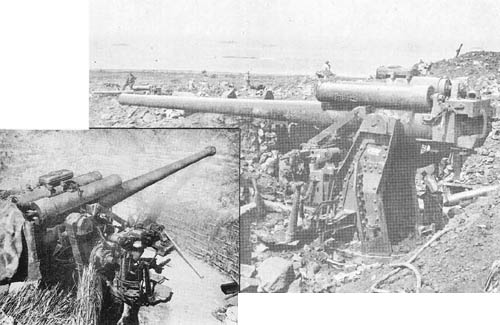
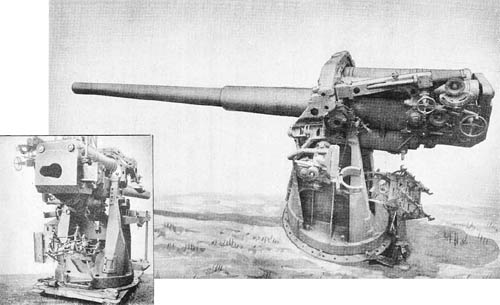
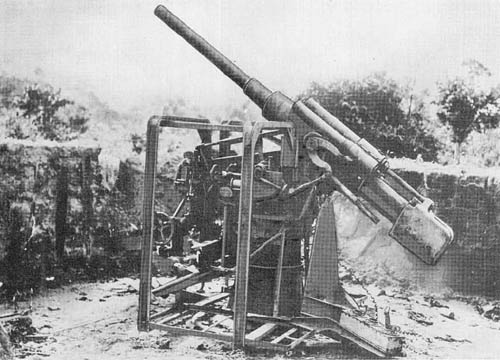
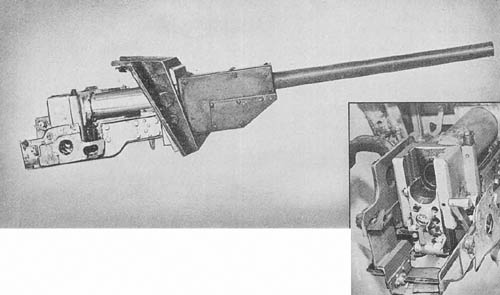
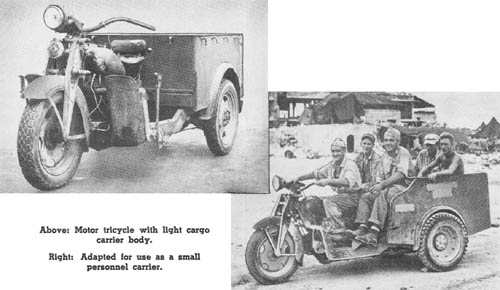
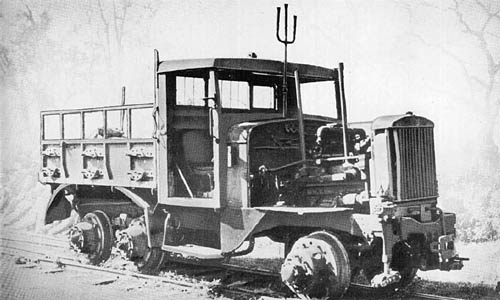
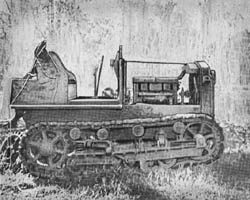 This is a slow speed tractor equipped with a towing hook and is believed to be the standard Japanese artillery prime mover. There are two bogies on each side, each bogie having three bogie wheels, two bearing on the outside and one on the middle of the tractor. Clutch and brake steering are provided. The power plant is a 4-cylinder, water-cooled, gasoline engine. The cylinder block is of two separate sections. Each section is joined into one piece at the top, but the base of each cylinder is separate from all other cylinders.
This is a slow speed tractor equipped with a towing hook and is believed to be the standard Japanese artillery prime mover. There are two bogies on each side, each bogie having three bogie wheels, two bearing on the outside and one on the middle of the tractor. Clutch and brake steering are provided. The power plant is a 4-cylinder, water-cooled, gasoline engine. The cylinder block is of two separate sections. Each section is joined into one piece at the top, but the base of each cylinder is separate from all other cylinders.